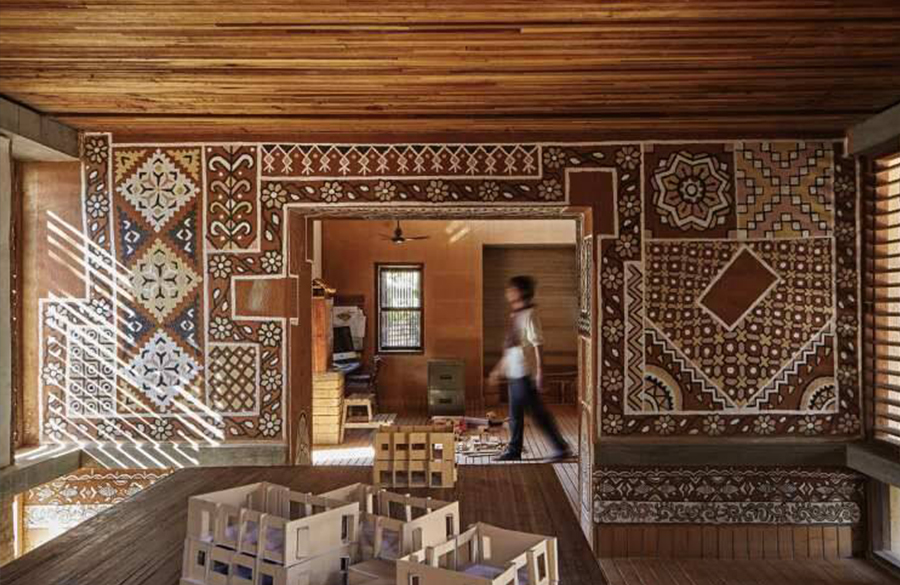In the realm of home design, the fusion of artistry and functionality is a delicate dance that shapes the spaces we inhabit. Joinery, a cornerstone of this discipline, marries the worlds of craftsmanship and science to create furniture, architectural elements, and structures that stand as testaments to human ingenuity. The art and science of joinery go beyond mere construction; they elevate woodwork into a form of expression, transforming raw materials into finely crafted pieces that enhance both the aesthetics and utility of our homes.
The Significance of Joinery in Home Design:
At its core, joinery represents the marriage of form and function. This ancient practice is not only about connecting wood pieces but also about creating harmonious designs that seamlessly integrate into the overall aesthetic of a space. From the sturdy construction of load-bearing beams to the delicate precision of decorative carvings, joinery is the backbone that supports and embellishes the built environment.
Beyond its structural importance, joinery serves as a visual language that communicates craftsmanship, attention to detail, and a commitment to quality. Well-executed joinery can elevate a space from ordinary to extraordinary, transforming it into a work of art that tells a story of skilled hands and artistic vision.
Artistry and Precision:
Joinery is a testament to the mastery of craftsmanship. The process involves selecting the right wood species, considering grain patterns, colors, and textures to create a harmonious visual composition. Each joint, each curve, and each detail is carefully considered and executed, resulting in a piece that resonates with artistic integrity.
Precision is paramount in joinery. Craftsmen use a variety of tools, from traditional hand tools to advanced machinery, to achieve accurate cuts, snug fits, and seamless connections. This balance between artistry and precision is what distinguishes joinery as both a creative pursuit and a technical discipline.
Types of Joinery Techniques:
Mortise and Tenon: This classic technique involves creating a rectangular hole (mortise) in one piece of wood and fitting a projecting piece (tenon) from another piece into it. Mortise and tenon joints are celebrated for their strength and durability, making them ideal for load-bearing structures.
Dovetail Joints: Dovetail joints are celebrated for their elegance and strength. The interlocking trapezoidal pins and tails create a joint that resists pulling apart. These joints are often used in drawers, cabinets, and cases where both aesthetics and durability are essential.
Biscuit Joints: Biscuit joinery involves cutting slots into adjoining pieces of wood and inserting oval-shaped wooden biscuits. This technique helps align and strengthen joints, making it a popular choice for joining panels and aligning edges.
Dado and Rabbet Joints: Dado joints feature a groove or channel cut across the grain of one piece to accommodate the edge of another piece. Rabbet joints involve cutting a recess along the edge of one piece to fit into the edge of another piece.
Impact on Home Aesthetics:
The impact of joinery on home aesthetics cannot be overstated. Custom joinery allows designers and craftsmen to create unique pieces that resonate with a space’s design language. The intricate details of joinery—such as the symmetry of dovetail joints or the clean lines of mortise and tenon connections—become visual focal points that add character and depth to interiors.
Additionally, joinery plays a role in defining architectural styles. From the intricate joints of traditional furniture to the sleek lines of modern design, joinery techniques contribute to the overall visual narrative of a space.
Sustainability and Legacy:
Joinery aligns with sustainable design principles by emphasizing longevity and quality. Well-crafted joinery ensures that furniture and architectural elements endure over time, reducing the need for replacement. This focus on durability promotes responsible consumption and reduces the environmental impact associated with constant replacements.
Innovation and Tradition:
While joinery techniques have ancient origins, modern technology has introduced new possibilities. Computer-aided design (CAD) and computer-aided manufacturing (CAM) tools enable designers to visualize intricate joints and execute them with unprecedented accuracy. These tools marry traditional craftsmanship with technological advancements, allowing artisans to push the boundaries of creativity while upholding time-honored techniques.
Conclusion: Elevating Woodwork into Art
Joinery in home design embodies the spirit of creativity, skill, and precision. It transforms wood into art and architecture, imbuing spaces with a sense of timelessness and authenticity. From the practicality of mortise and tenon joints to the aesthetic appeal of dovetail connections, joinery enriches our living environments by crafting dreams into tangible reality. Each joint, each curve, and each piece of wood represents a fusion of the past and the present—a testament to the enduring art and science of joinery in the world of home design.


